Japanese railway wonder - Shinkansen train
 Bashny.Net
Bashny.Net
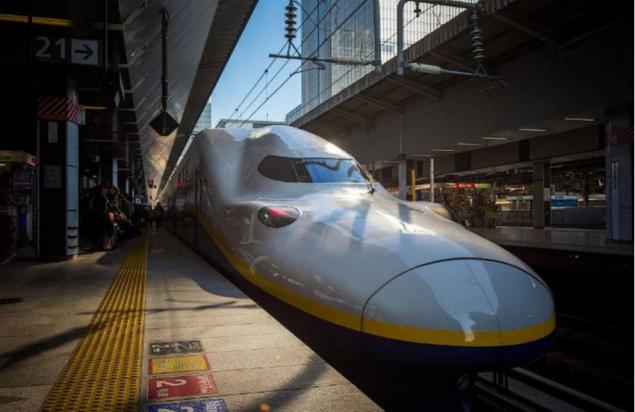
Shinkansen train on the background of Mount Fuji - one of the most recognizable landscapes of modern Japan:
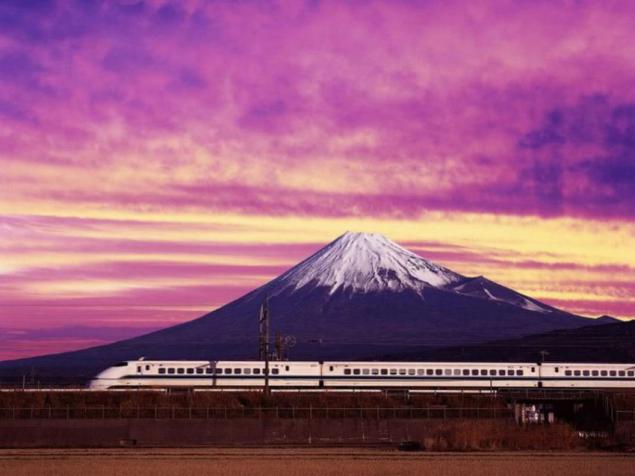
Literally translated from the Japanese word "Shinkansen" means "new line". Before the advent of high-speed trains railways in Japan were narrow-gauge (1,067 mm), and had a lot of twists due to the peculiarities of the local topography. On such roads to develop high speed was too limited. For the "Shinkansen" have been specially designed new line has a standard gauge in 1435 mm.
Why Japan initially deviated from the international standard is still not fully understood. It is believed that it was the decision of a certain Mr. Okubo, who was the person in charge at the start of construction of the first railway in Japan. Of course, the narrow gauge is cheaper, and the trains themselves were smaller and more economical to manufacture. However, at the same time it also means less load capacity and low speed. Therefore, the feasibility of this solution for the Japanese remains a big question. At the beginning of the 20th century, the proposed project to restructure the web according to international standard, and while supporting the idea had many, instead it was decided to spend the money to build new directions. Thus, the narrow gauge spread throughout Japan, which still gives a lot of inconvenience.
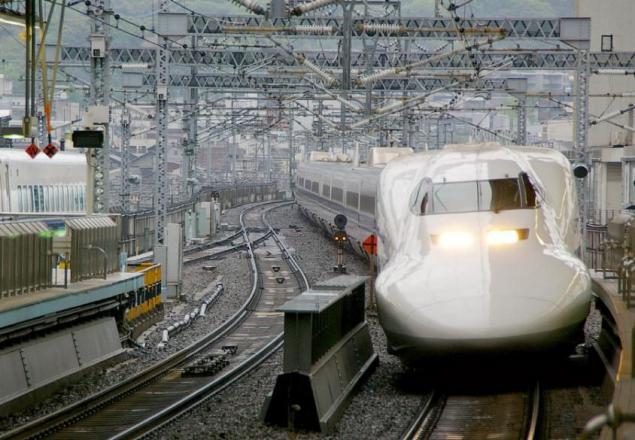
Supporters of the broad gauge was able to translate their designs to life on the railroad, paved the Japanese in the early 30s. colonized in South Manchuria. In 1934, between the cities of Dalian and Changchun (700 km) was launched the legendary "Asia Express", revealing the character of the Japanese imperialist power at that time. Capable of speeds over 130 km / h, it is much superior to the railway system in China at that time, and even was much faster than the fastest express train in Japan. And on a global scale "Asia Express" was an impressive performance. For example, the world's first air-conditioned cars were equipped with it in it. Dining car was equipped with a refrigerator, also had a special coach - an observation platform with windows along the entire perimeter, furnished with leather chairs and bookshelves.
Probably, this example was the final argument in favor of broad gauge and gave rise to the first high-speed railway projects in Japan. In 1940, the Government of Japan approved an incredible scale project. Even then, the project involved the creation of a train capable of speeds up to 200 km / h, but the Japanese government was not going to be limited to laying lines only in Japan. It was supposed to pave the underwater tunnel to the Korean Peninsula and ways to stretch right up to Beijing. Construction has already partially started, but soon began a war and the subsequent deterioration of the military and political positions of Japan ended the imperial ambitions. In 1943, the project had been discontinued, the same year was the last for the "Asian Express". However, some parts of the lines of "Shinkansen", operated today, were built in the pre-war years.
On the construction of "Shinkansen" talking again after 10 years of war. Rapid economic growth has created a large demand for freight and passenger traffic in the country. However, the idea to revive the project proved to be quite unpopular and was heavily criticized. At that time, it was strongly believed that road and air transport will supersede the railway soon as it happened, for example, in the US and some European countries. The project was again in jeopardy.
In 1958, between Tokyo and Osaka, in yet narrow gauge, was launched on the direct ancestor of "Shinkansen" - Business Express "Kodama". With a top speed of 110 km / h, he covered the distance between the cities of 6, 5 hours, making it possible day trips. In Japan, where the culture of doing business based on personal meetings, it was very convenient solution. Nevertheless, he served for a brief period. The incredible popularity of "Kodama" did not leave any doubts in the need for high-speed lines, and less than a year, the government finally approved the project to build a "Shinkansen».
Business Express "Kodama" 1958-1964 gg .:
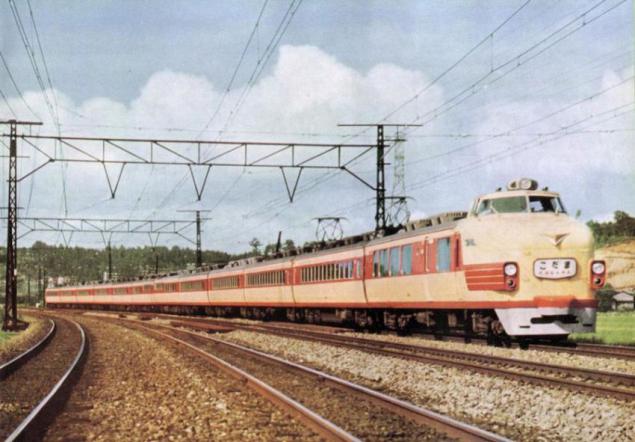
It is widely believed that the launch of "Shinkansen" was scheduled for the opening of the Olympic Games in Tokyo, but the Japanese deny it. Construction lines "Shinkansen" began in March 1959, more than a month before Tokyo was chosen host city for the Games. However, the Olympics came in very handy. Initially announced budget for the construction of "Shinkansen" was obviously too small and everyone knew it, but say the real number was too risky. Credit allocated by the World Bank at a sufficiently low interest rates did not cover half the costs. Real value, which, in turn, claimed exceeded by almost 2, 5 times managed to cover, "having obtained" money from the state, ostensibly to catch the opening of the Olympics!
Early in the morning October 1, 1964 at Tokyo Station ceremony of the first run "Shinkansen" with a specially built platform number 19. Platform richly decorated red and white ribbons and traditional Japanese paper ball "Kusudama." Tronuvshegosya train tore the tape, the ball opened and out at will fluttered 50 white doves. Then there was music, fireworks and general rejoicing of thousands of Japanese, not too lazy to visit at 5 am so momentous event. The same evening, the pictures, "Shinkansen" appeared on the front pages of all the major publications of the country under the headlines, broadcasts about the beginning of a new era in Japanese history, and what really modest, around the world.
The launching ceremony of the first "Shinkansen". Tokyo, 1964.
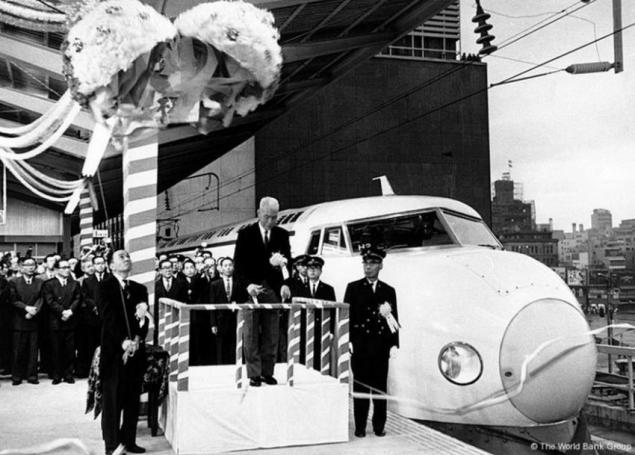
Sense of national pride in the "Shinkansen" does not shy away from any of the Japanese, and the emperor himself, they say, wrote about him, whether a song or whether ode.
In 1975, Japan visited Queen countries homeland railway. It is, of course, about England. The royal couple arrived on a friendly visit to the emperor, and one of the first items in the program of entertainment was a trip to the "miracle train" to Kyoto. For Japan, it was a good excuse to brag, but this rare chance and could not miss the quirky Japanese trade unions. Almost immediately upon arrival of the Queen workers staged the first ever Japanese railway strike. In short, all the drivers "Shinkansen", of which there were 1,100 people, refused to roll queen, until you have made the union's demands. Of course, a cornered bosses requirements quickly complied, but a ride on the "Sinkansene" Queen was only already on the way back. Series of failures did not stop. On the day when the Queen had to take the train, was a heavy downpour and the train was late by as much as 2 minutes. In general, it turned out there to make an impression on Elizabeth II or not - is unknown, but it is said to strike it was not offended, and took all with humor. She said she herself is no stranger to strikes.
Train "Shinkansen", painted with paint in protest:

Contrary to skeptical expectations, train Shinkansen proved incredibly successful and fast enough to recoup the costs for construction. Just 8 years second line was opened. Already by 1981 the debt to the World Bank loan was completely covered. Moreover, to date train Shinkansen provides up to 80% profit Japan Railways. At the moment there are 8 lines of "Shinkansen" total length of almost 3000 km and they continue to be built.
Scheme Shinkansen train lines:

Of course, in the 50 years of its existence, "Shinkansen" was rather big evolutionary path, though not always cloudless.
In the 80-ies. 575 residents of the city of Nagoya, whose houses were located along the paths, are suing the management of "Shinkansen" to complain about the noise and strong vibrations. Immediately after this technology have been introduced to reduce noise and vibration, improving the quality of the railway. It has also introduced a rule slow down when passing through densely populated areas.
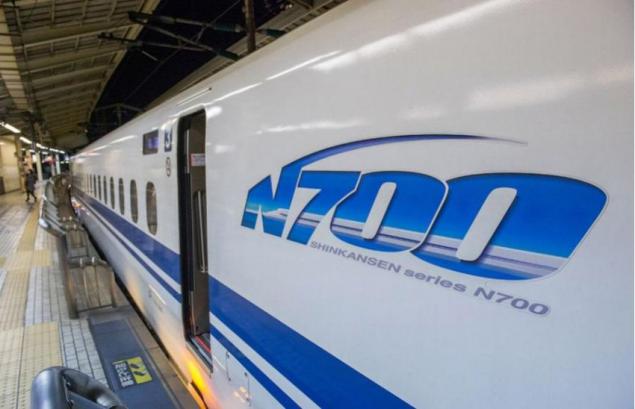
Today the "Shinkansen" virtually silent, the path often take place in close proximity to buildings without causing much discomfort. Another step in the development of steel technologies in the field of energy conservation. And all because of Japan, where 99% of the oil imported 7 (not from Russia), appears to be very sensitive to the repeated oil shocks. Thus, under pressure from both external and internal factors in the person sverhtrebovatelnyh Japanese "Shinkansen" rapidly improved. Nevertheless, the very first model train was permanent until 1982, and even after the emergence of new models remained in operation right up to 2008
In 1987, the Japanese National Railways was privatized, rather than state monopoly 5 new independent companies. Healthy competition has given a new impetus to the development of technology and quality of service.
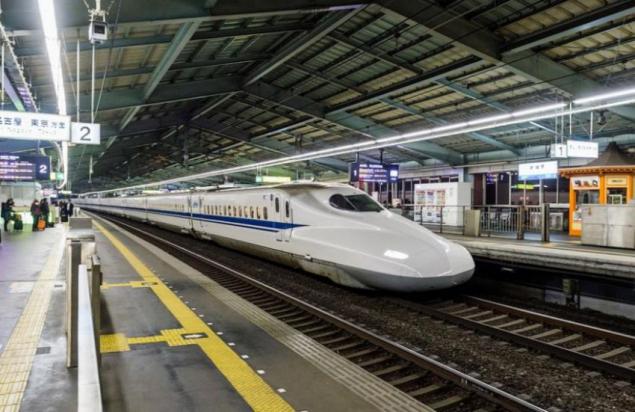
The trains were so-called "green cars", comparable with the level of business class on airplanes. Actually, airlines and were and are still the main competitors "Shinkansen". These cars have become a kind of indicator of the economic situation in the country. During the heyday of many companies buy their employees to travel in space "green cars", but with the decline of the economy are usually empty.
Now the interior of the car looks like:

Tickets are available with and without a place. In cars without a seat may have to sit in the middle,, but cheaper
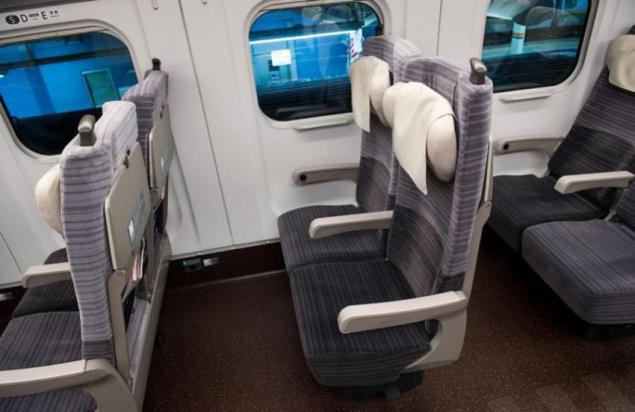
Toilet:
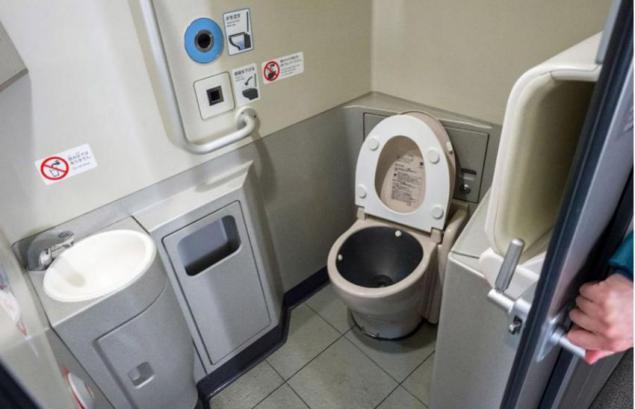
At the station, the train hanging scheme, so that immediately clear what car you need:
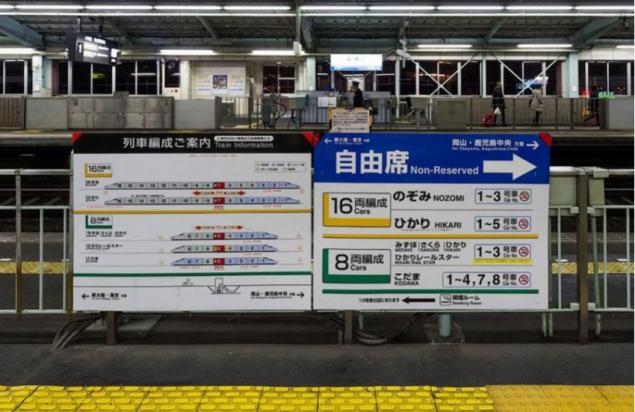
On landing all stand in neat lines. On the platform drawn line queues in each car:
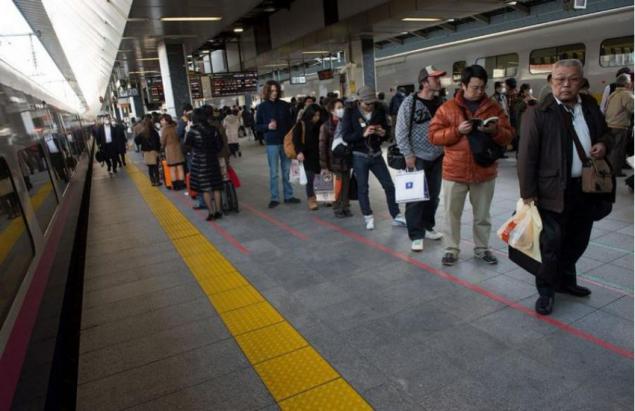

Companies also competed in refinement food on board. In general, eating a "bento" in "Sinkansenah" has become a kind of tradition, even if it takes just a couple of hours. They are sold as at stations and in trains themselves. At each site has its own unique "bento". Until 2000, there were trains dining cars and wagons cafe, but the ever-increasing flow of passengers demanded more seats. Began to appear double-decker train, but in these restaurants did not last long. Same story touched and private coupe that could be room for one or an entire conference room for 4-5 persons. The economic downturn is almost completely destroyed the demand for such cars.
Traditional station "bento" lunch:
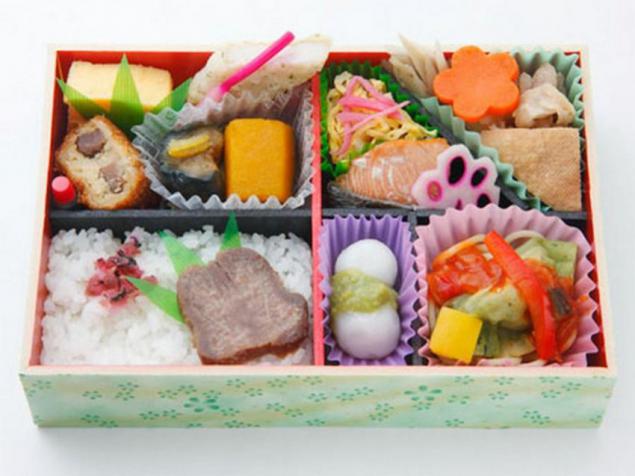
90th. and the end of the economy "bubble" became the most unstable in the history of the "Shinkansen". In addition, in 1995 in the Osaka earthquake happened, and although the train were not injured, rails properly bent. On the restoration took about 3 months. But there were also positive aspects, such as the Olympics in Nagano, 98, has created a demand for new directions!
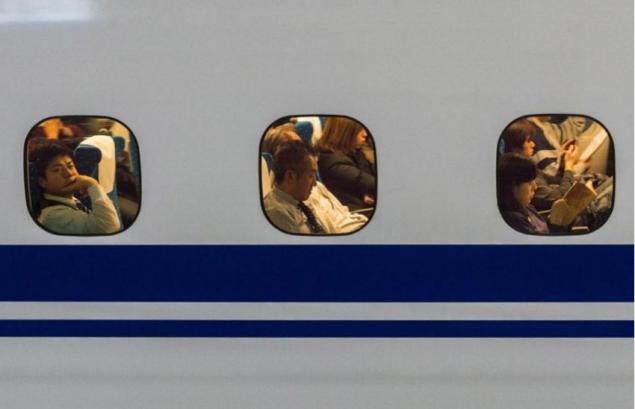
Despite the slowing economic growth during this time it has consistently continued to appear new and improved model trains. Were developed various security systems, primarily for protection during earthquakes. Now in case of an earthquake triggered an automatic warning system, which slows the train for a split second until the push. So even shattering earthquake in 2011 did not happen no accidents with trains "Shinkansen", they are all safely stopped automatically. By the way, the danger of earthquakes is one of the main reasons for the train ride slower than might technically.
Modern trains "Shinkansen»:
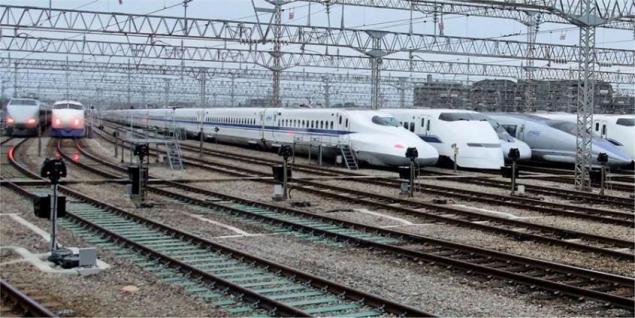

Carriages on trains "Shinkansen" Do not disconnect. Therefore, they do not have a tail, but always two heads! And the train can be interconnected (Smack):
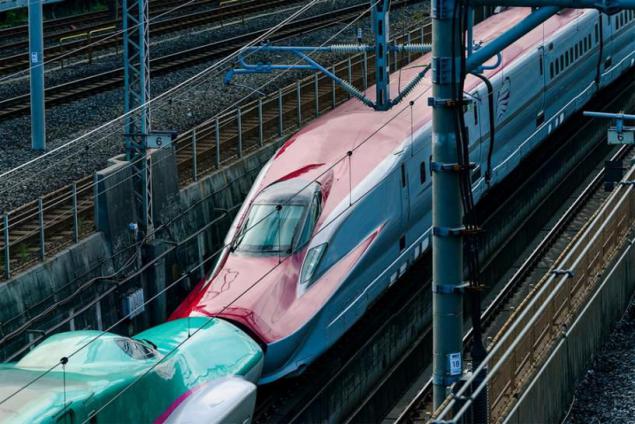
By the way, red steeper and faster, so he usually drags green. The last model came out a couple of months ago, in March 2014.
There is another very special train. It is called «Doctor Yellow». They say that to see it - a very good sign. This is such a special doctor who examines and verifies the route and other related equipment to repair several times a month. During the day he goes at the same speed as the rest of the train, so as not to interfere. At night, he slowly and carefully examine all parts of the route.
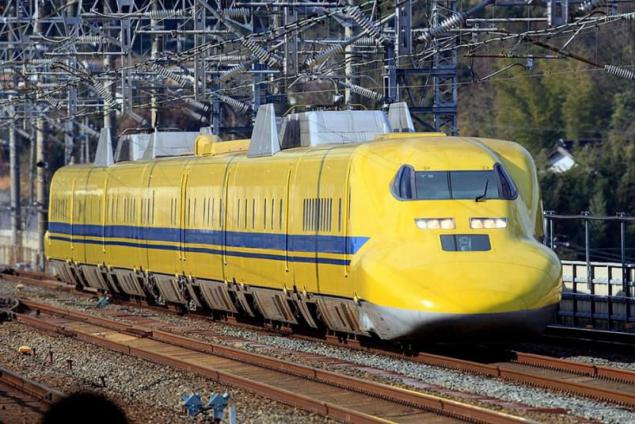
Starting from the 2000s. Japanese technology "Shinkansen" were actively exported abroad. At this point in the Asian region, high-speed trains are China, Taiwan and South Korea. All of these countries except Korea, have high-speed railways, based on Japanese technology (Korea technology borrowed the French TGV). Exported not only technology, but also they decommissioned Japanese compositions.
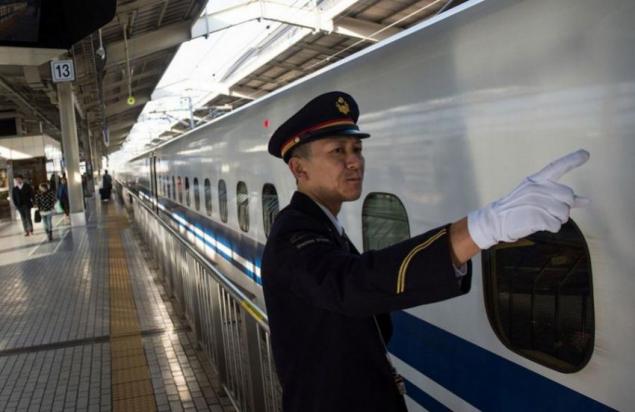
Modern train "Shinkansen" in Japan are developing a maximum speed of 270 km / h, the next year it is planned to raise up to 285 km / h, although the test speed reaches 440 km / h. Time travel between Tokyo and Osaka is now less than 2, 5 hours. The trains are equipped with everything needed for a comfortable journey - clean toilets, smoking, rosettes at each seat, sometimes even machines with drinks.
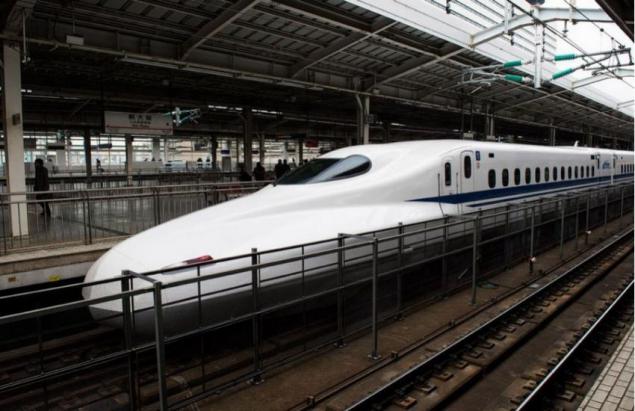
Line Tokaido (Tokyo-Osaka) is the busiest high-speed rail line in the world and carries a year more than 150 million passengers. Train from Tokyo departs every 10 minutes.

Despite the relatively high cost, the train Sinkansken not lose popularity because of its accuracy, speed, comfort, high level of service, and most importantly, safety. Over 50 years of service, not a single incident which caused death or serious injury from high-speed trains. No other country in the world can boast of such safety performance of high-speed rail. Statistics states that "Peregrine Falcon" has killed more than 20 people in the first year of their service.
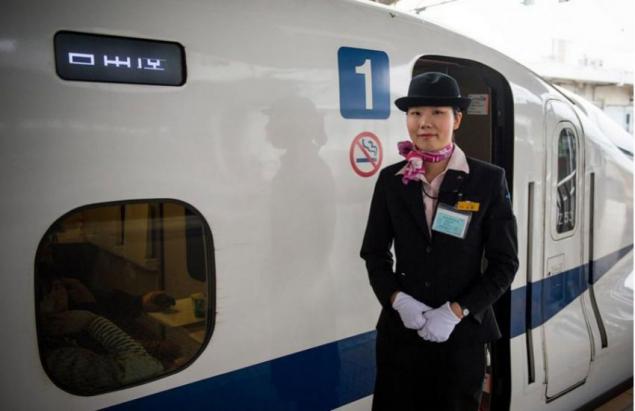
Although the Japanese Shinkansen train remains one of the most advanced vehicles in the world, working to improve it do not stop. In Yamanashi Prefecture has a special research center, where you create and test new technologies, in particular, JR-Maglev - Japanese system of high-speed maglev trains. It was there in December 2003, the composition of the three test cars modification MLX01 set an absolute speed record for rail transport - 581 km / h.
Maglev MLX01-1:
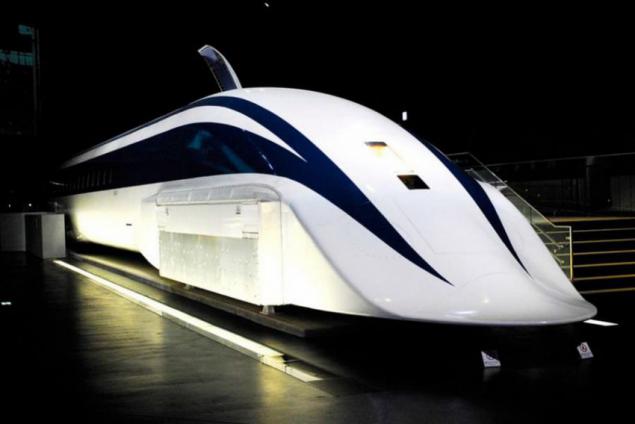
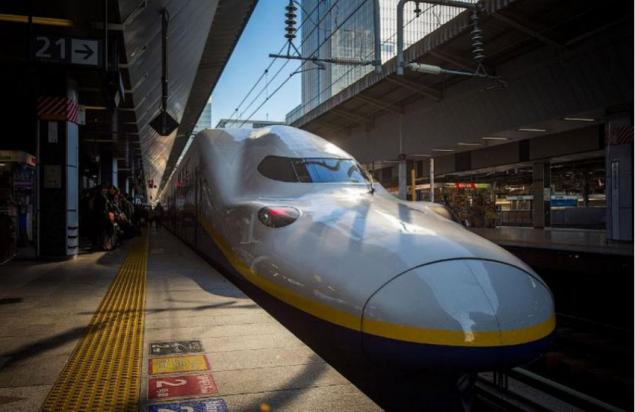
Source: nevolia.net
Tags
See also
Jubilee symbol of the new Japan
Indian Railway network (16 photos)
Trains and Railroads
German startup Locomore offers to travel in an eco-trains
Moscow Ring Railway
Chinese high-speed trains
Railway in Japan, which only works for one Schoolgirls
Rail-Road Vehicle — a road-rail hybrid future
Railway in Switzerland (Picture 19 + 2 video)
Beautiful scenery of the Canadian railway

















